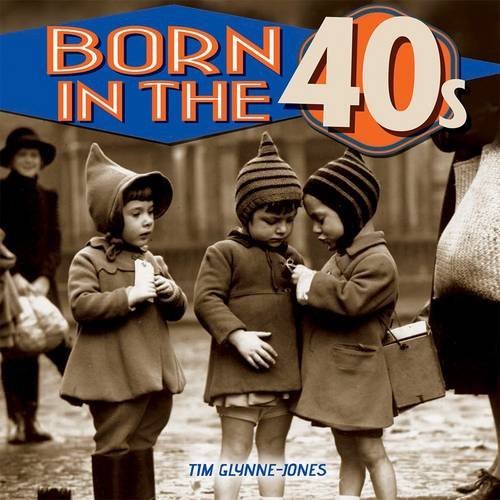LOOK BACK IN SMILES
The nostalgia industry is alive and well judging by the number of period dramas repeated on the TV (Call the Midwife, Grantchester, George Gently etc). Yet none of these offerings, no matter how good they are, can match the thrill of picking up a photograph album and flicking through pictures of spontaneous, un-staged moments.
Born in the 1940s is an interesting pocket-book trip down memory lane, evoking a Britain that pulled together against Hitler with a stiff upper lip that never wavered. With the clever use of photographs, author Tim Glynne-Jones has constructed an illustrated narrative of a country determinedly moving on from the grimness of war towards the promise of a bright new future. The book is also a fascinating piece of social history offering a through the looking glass experience of what it was like growing up as part of the so-called baby boomer generation.
143 pages and 90 plus black and white pictures deliver a cheerful, sanguine snapshot of British life including London Pearly Queens, summer vacations at Butlins Holiday Camp, a group children sitting on a log while their teacher reads them a story, and a prototype of the modern people carrier (a motorbike and sidecar with room for six). Choosing a stand-alone favourite isn’t easy although if push comes to shove mine would have to be A Bicycle Built for Three. This delightful picture of a couple and their daughter peddling to their holiday on a tandem brings an instant smile to the face. This really was the age of innocence as the road is empty of traffic while the bike which “weighed a good deal more, being made of tubular steel sections,” is loaded with rucksacks and other holiday paraphernalia. None of the riders are wearing crash helmets as “they were considered unnecessary.” So much for health and safety!
The one complaint I have with this book is the absence of pictures with ethnic minorities. It’s a curious omission since people from Britain’s colonies fought in two World Wars for the so-called Mother Country and helped to rebuild her. Let’s also not forget that in June 1948 the ship Empire Windrush brought hundreds of men from the West Indies to London’s Tilbury docks, marking the start of mass immigration to Britain. It was the first time many Caribbean citizens had been to the country and others would follow driven by patriotism, the chance of a new beginning, and the prospect of finding work in a country with an acute labour shortage. There’s no point speculating on how/why this picture gap arose although it could be argued that the full story of Britain’s black, Asian, and minority communities is better told in a separate book. Those who agree should read Black Britain, A Photographic History by Paul Gilroy (with an introduction by Stuart Hall), or Rozina Visram’s The History of the Asian Community in Britain.
Other books in the Born In the series include Born In the 1930s, 1950s, 1960s and 1970s. Born in the 1940s is a fascinating stroll through the past with a sharp, witty commentary that delivers a cosy, nostalgic warmth and a cheerful snapshot of how a nation got through the years following World War 2.
Reviewed by Juliette Foster








